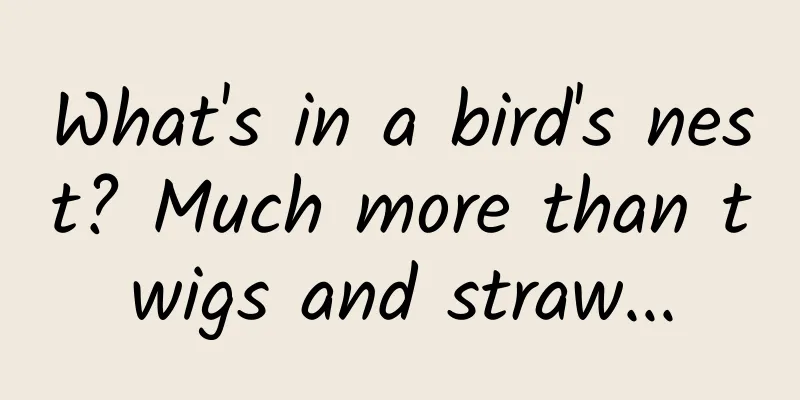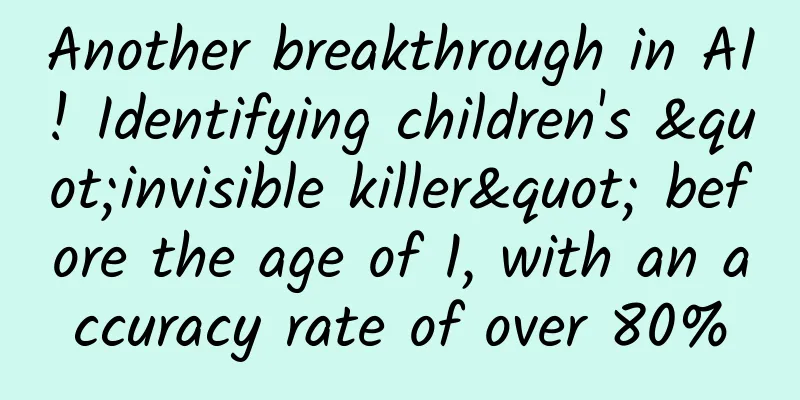Deadly and fatal! Is the "beautiful killer" in the ocean also an excellent doctor?

|
Produced by: Science Popularization China Author: Tian Dawei (popular science creator) Producer: China Science Expo Conchs are found all over the world and are closely connected to our lives. When we go to the beach, we often pick up conchs for fun; their delicate and exquisite appearance makes them the inspiration for many handicrafts; conchs themselves also have high nutritional value and are delicious, making them a common delicacy on the table. However, there are also extremely dangerous species among conchs. Not only are they difficult to detect, they are often also "experts in using poison." Beware of poisonous conches When picking up shells at the beach, if you come across conchs like the ones in the picture that look a bit like heart shapes, be careful. Conus conch (Image source: Wikipedia) These snails are the most poisonous snails known to date - cone snails . Because they look a bit like the shape of a chicken heart, they are also called "cone snails". Cone snails are distributed in many parts of the world, and you may also encounter them in the coastal areas of our country. When you encounter this kind of snail, if there are only empty shells left, you can still pick them up, but if they are still alive, don't catch them casually. Some of them are very poisonous, and being stung may be fatal. Distribution of cone snails (Image source: Reference [1]) For example, the Conus geographus in the picture below, nicknamed the "killer cone snail", releases enough venom when it attacks to kill an adult. Conus geograficus (Image source: Wikipedia) In addition to the cone snail, all conchs of the genus Conus are also poisonous. According to records, more than 30 people have been poisoned to death by cone snails since 1705, so the conchs of the genus Conus are called "the most poisonous conchs in the world." Of course, although cone snails are highly poisonous, they will not actively attack humans. If you accidentally encounter a cone snail, they will first retract into their shells to save their lives. They will only attack humans if they are caught in someone's hands and cannot escape. And compared to other animals, the death toll of more than 30 people in 300 years is not high. In the United States, more than 30 people die each year from stings by bees, wasps, and hornets, so there is no need to worry when playing at the beach, just don't actively provoke cone snails. The poison master in the ocean Although the toxins of cone snails are not specifically designed to kill humans, they are a real "super killer" to their prey. Cone snails use poison needles, poison mist, "evil spirits" and other means to catch their prey. 1. Poison Needle Sea snails like the cone snail have poisonous needles in their bodies. When these needles come into contact with small fish, they will pierce into the bodies of small fish and release venom. Radula of cone snail (Image source: Reference [5]) Cone snails that use this attack method need to sneak up on the small fish and then use their radula, which is like a poisonous needle, to attack the small fish. Because sea snails have very weak mobility, they have evolved highly toxic venom specifically to target fish, agile prey. For example, a small fish stung by a cone snail will often lose its ability to move within a second or two and surrender. Once the fish is poisoned and loses its ability to resist, the killer cone snail will open its big mouth and swallow the fish whole. Conus geograficus (Image source: Wikipedia) 2. Toxic fog Some types of conch can "deliver poison from a distance", and they can poison small fish without having to get close to them, such as the tulip cone snail shown below. Tulip cone snail (Image source: Wikipedia) As they approach the small fish, they release venom into the seawater. The venom of the tulip cone snail contains a component similar to insulin, which quickly lowers the blood sugar in the fish's body, causing the fish to have "hypoglycemia" symptoms. At this time, the body of the small fish will become very weak, and even if it finds the cone snail approaching, it will be unable to escape. In this way, the tulip cone snail can slowly approach the small fish and eat them. 3. "Ecstasy" There is another kind of snail in the cone snail family that can also "release poison from a distance", but what they release is not venom, but "love potion" to lure prey into the trap. This type of cone snail is called the Emperor Conus Snail, and they catch worms like sandworms. Because sandworms hide themselves in deep caves, it is difficult for the Emperor Conus Snail to "bite" them directly. For this reason, the Emperor Conus Snail releases a special venom that can simulate the pheromones emitted by sandworms during mating. When the sandworms in the cave sense this smell, they will unconsciously crawl to the entrance of the cave to look for a mate. At this time, the Emperor Conus Snail waiting at the entrance of the cave can easily catch the sandworms. Cone snail (Image source: Wikipedia) It can be said that in order to capture different types of prey, cone snails have evolved a variety of methods of using poison. Do we need to be on guard against these marine poison masters? No, they may even be our helpers. Conus toxins may be used to treat diseases Although scientists already knew that cone snails are masters of using poison, they were still surprised when analyzing cone snail venom because the toxin of cone snails is extremely complex. First of all, there are about 500 species of cone snails, and almost every cone snail has its own unique toxin formula. In addition, the toxin of each cone snail is also a mixture of 50-200 ingredients. These complex ingredients are simply a treasure trove of drugs for biologists. For example, in order to make fish lose their ability to resist as quickly as possible, the killer cone snail contains a component in its toxin that can block nerve signal pathways. This component, if used properly, can become a powerful analgesic that is thousands of times more effective than morphine and will not cause dependence. In addition, the insulin-like component released by the tulip cone snail mentioned above is also of great medical value. Based on this component, scientists may develop new drugs to treat human diabetes. In addition, some cone snail toxins can be used to study drugs to treat epilepsy, depression, Alzheimer's disease and other diseases. Perhaps, in the future, these killers in the ocean will become the saviors of mankind. Conclusion From the cone snail, an animal that is both "deadly and lethal", we can see that some creatures in nature may hide solutions to human problems. Protecting biological diversity is actually a long-term investment for human society. In the future, these creatures may contribute their unique strengths to human society. References: [1] Gao, Bingmiao & Peng, Chao & Yang, Jiaan & Yi, Yunhai & Zhang, Junqing & Shi, Qiong. (2017). Cone Snails: A Big Store of Conotoxins for Novel Drug Discovery. Toxins. 9. 397. 10.3390/toxins9120397. [2]Alisa Zapp Machalek. Secrets of the Killer Snails[J]. National Institute of General Medical Sciences, 2011: 1-3 [3]Torres JP, Lin Z, Watkins M, et al. Small-molecule mimicry hunting strategy in the imperial cone snail, Conus imperialis[J]. Science advances, 2021, 7(11): eabf2704. [4]Olivera, BM, Watkins, M., Bandyopadhyay, P., Imperial, JS, de la Cotera, EP, Aguilar, MB, Vera, EL, Concepcion, GP, & Lluisma, A. (2012). Adaptive radiation of venomous marine snail lineages and the accelerated evolution of venom peptide genes. Annals of the New York Academy of Sciences, 1267, 61–70. [5] Jiménez-Tenorio, Manuel. (2011). Cone radular anatomy as a proxy for phylogeny and for conotoxin diversity. 10.13140/RG.2.1.2725.9921. |
<<: Itching, itching, itching and peeling may also be cancer?
>>: What did aliens look like before the little green and little gray?
Recommend
Ten old iPhones were put into water for three minutes and all died
iPhone 7 is the first iPhone to support waterproo...
Review of semi-finished food delivery service: Can you save time and effort while also having deliciousness and health?
If you have already formed a small family and hav...
Case analysis: How to use video information flow in the e-commerce industry?
As the trend of short videos continues to deepen,...
Tencent announced the adjustment of WeChat external link regulations: adhere to the user-oriented, give more choices to users, and open one-to-one scene access restrictions from today
IT Home reported on September 17 that recently, t...
Teach you how to make money with Douyin from scratch - techniques to attract fans and monetize
Tik Tok - the second wave of short video populari...
"Blue Fire Micro-Course Lecturer Practical Training Camp" You can easily teach and make money even if you are not a lecturer
Absolutely useful information, based on 3 years o...
Alipay collects the five blessings in 2020, and the 2020 Alipay blessing card collection guide is here!
It’s time to count the days and look forward to t...
How much does it cost to develop a Huizhou property app? What is the price for developing a Huizhou property app?
The factors that affect the quotation of Huizhou ...
Event Promotion Planning: How to organize a complete and efficient event?
This is an era where "content is king"....
Why do people drink ice beer when eating crayfish, but no one drinks ice liquor?
After a week of hard work, how do you plan to tre...
Changshu SEO training: What are the contents of dead links?
Because the link is changed or the website path e...
Shopping traps that must be avoided on Double Eleven
Another "Double Eleven" is coming. Many...
Do I need to care about these small particles growing around my eyes?
The skin around the eyes is relatively fragile an...
To do community operation, you need to have 3 kinds of thinking!
Community operation needs to start from these thr...
How do Internet celebrity stores create hit products?
This article mainly analyzes from four aspects: c...









